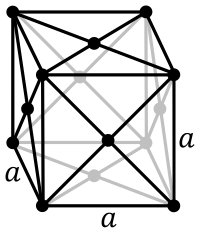
Photo from wikipedia
Indoor radon and its decay products are the primary sources of the population's exposure to background ionizing radiation. Radon decay products are one of the leading causes of lung cancer,… Click to show full abstract
Indoor radon and its decay products are the primary sources of the population's exposure to background ionizing radiation. Radon decay products are one of the leading causes of lung cancer, with a higher lung cancer risk for smokers due to the synergistic effects of radon decay products and cigarette smoking. A total of 459 year-long radon measurements in 257 detached and semi-detached residential homes in southwest and south Greenland were carried out, and a dose assessment for adults was performed. The annual arithmetic and geometric means of indoor radon concentrations was 10.5 ± 0.2 Bq m-3 and 8.0 ± 2.3 Bq m-3 in Nuuk, 139.0 ± 1.0 Bq m-3 and 97.3 ± 2.1 Bq m-3 in Narsaq, and 42.1 ± 0.7 Bq m-3 and 22.0 ± 3.1 Bq m-3 in Qaqortoq. Arithmetic and geometric mean radon concentration of 79.0 Bq m-3 and 50.3 Bq m-3 were estimated for adult, person-weighted living in south Greenland. The total number of detached and semi-detached residential homes where indoor radon is exceeding 100 Bq m-3, 200 Bq m-3, and 300 Bq m-3 is 37 homes (15.0%), 13 homes (5.2%), and 8 homes (3.2%), respectively. A positive correlation between indoor air radon concentrations and underlying geology was observed. The indoor radon contribution to the annual inhalation effective dose to an average adult was 0.5 mSv in Nuuk, 6.5 mSv in Narsaq, 2.0 mSv in Qaqortoq, and 4.0 mSv for south Greenland adult person weighted. The estimated annual average effective dose to adults in Narsaq is higher than the world's average annual effective dose of 1.3 mSv due to inhalation of indoor radon. Cost-efficient mitigation methods exist to reduce radon in existing buildings, and to prevent radon entry into new buildings.
Journal Title: Journal of environmental radioactivity
Year Published: 2022
Link to full text (if available)
Share on Social Media: Sign Up to like & get
recommendations!